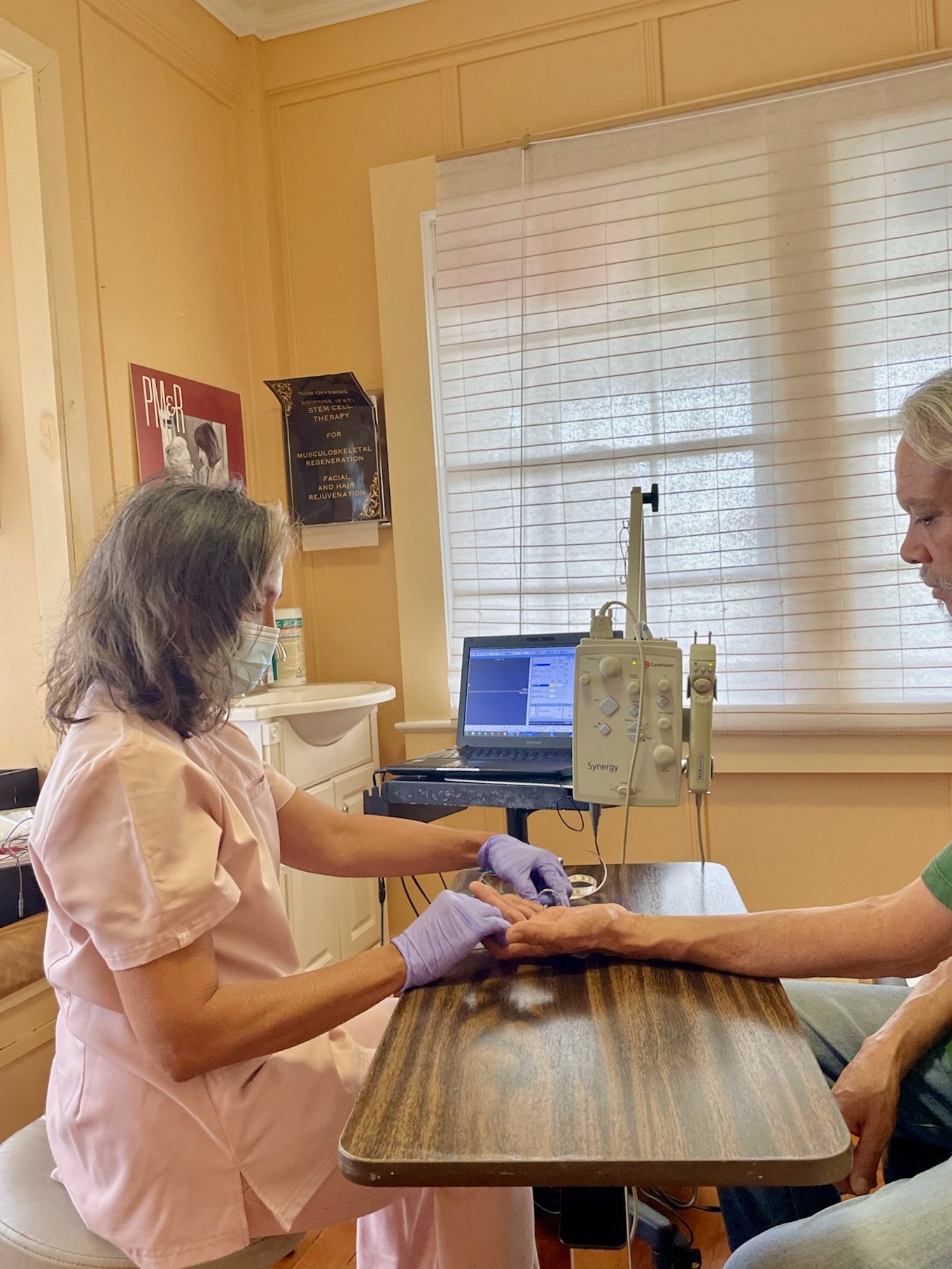
Electrodiagonsis
Electrodiagnostic tests measure the electrical activity of muscles and nerves. By measuring the electrical activity they are able to determine if there is nerve damage and the cause of the damage.
Two common electrodiagnostic tests are
Electromyography (EMG)
Nerve Conduction Velocity (NCV) Test
-
An electromyogram (EMG) is a test that measures the electrical activity of a muscle. It detects any signs of blocking or slowing down of responses to nerve stimulation. The test provides information about the muscle itself and shows how well it receives stimulation from the nerve. A nerve conduction velocity (NCV) test is often done at the same time as an EMG.
-
An EMG is often used to evaluate unexplained muscle weakness, twitching, or paralysis, and to find the causes of numbness, tingling, and pain. EMG testing can differentiate between true weakness and reduced use because of pain or lack of motivation. It can also determine whether a muscle disorder begins in the muscle itself or is caused by a nerve disorder.
-
In an EMG, a physician or technician inserts a very fine needle, which serves as an electrode, through the skin into the muscle. With the electrode in place, the patient is asked to slowly contract the muscle—for example, by bending the arm—with gradually increasing force, while the electrical activity is being recorded. The activity can be displayed visually on an oscilloscope or screen or played audibly through a speaker. The results can provide information about the ability of the muscle to respond to nerve stimulation.
-
The patient may feel some minor discomfort, similar to an injection when the needle or needles are inserted. Afterward, the examined muscle may feel tender or sore for a few days, and there may be a small bruise.
-
A nerve conduction velocity test, also called a nerve conduction study, measures how quickly electrical impulses move along a nerve. It is often done at the same time as an electromyogram, in order to exclude or detect muscle disorders. A healthy nerve conducts signals with greater speed and strength than a damaged nerve. The speed of nerve conduction is influenced by the myelin sheath—the insulating coating that surrounds the nerve. Most neuropathies are caused by damage to the nerve's axon rather than damage to the myelin sheath surrounding the nerve. The nerve conduction velocity test is used to distinguish between true nerve disorders (such as Charcot-Marie-Tooth disease) and conditions where muscles are affected by nerve injury (such as carpal tunnel syndrome).
-
This test is used to diagnose nerve damage or dysfunction and confirm a particular diagnosis. It can usually differentiate injury to the nerve fiber (axon) from injury to the myelin sheath surrounding the nerve, which is useful in diagnostic and therapeutic strategies.
-
During the test, flat electrodes are placed on the skin at intervals over the nerve that is being examined. A low-intensity electric current is introduced to stimulate the nerves. The velocity at which the resulting electric impulses are transmitted through the nerves is determined when images of the impulses are projected on an oscilloscope or computer screen. If a response is much slower than normal, damage to the myelin sheath is implied. If the nerve's response to stimulation by the current is decreased but with a relatively normal speed of conduction, damage to the nerve axon is implied.
-
There is generally minimal discomfort with the test because the electrical stimulus is small and usually is minimally felt by the patient.

